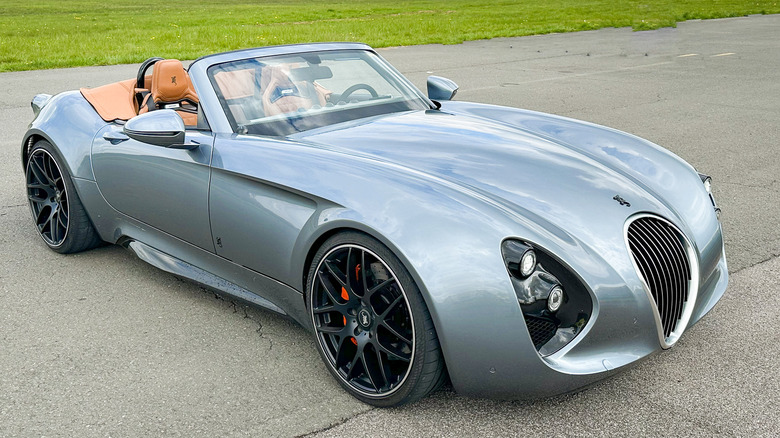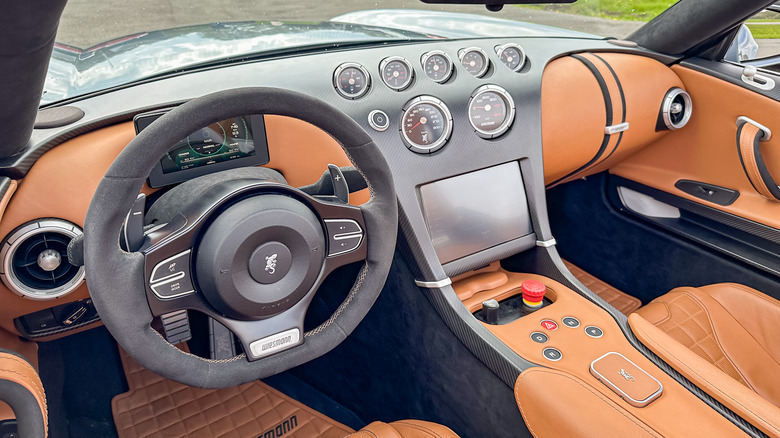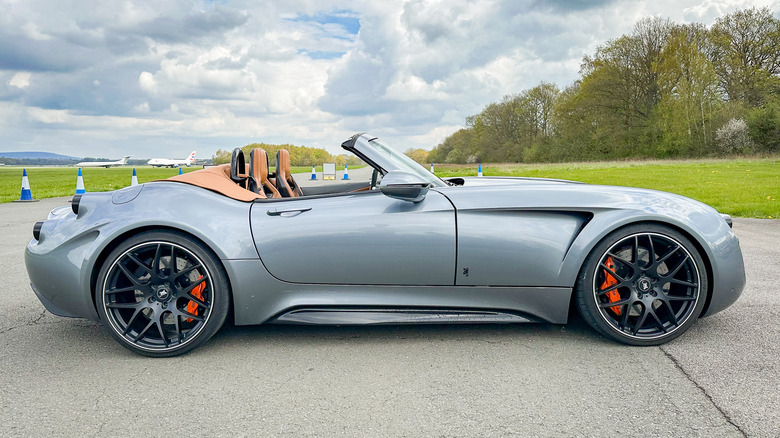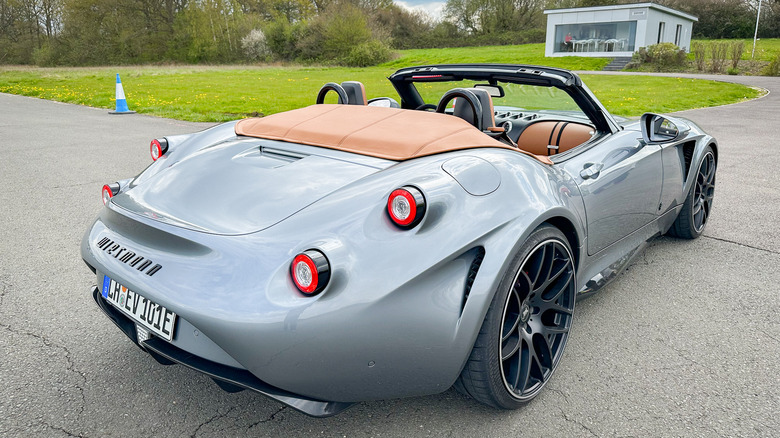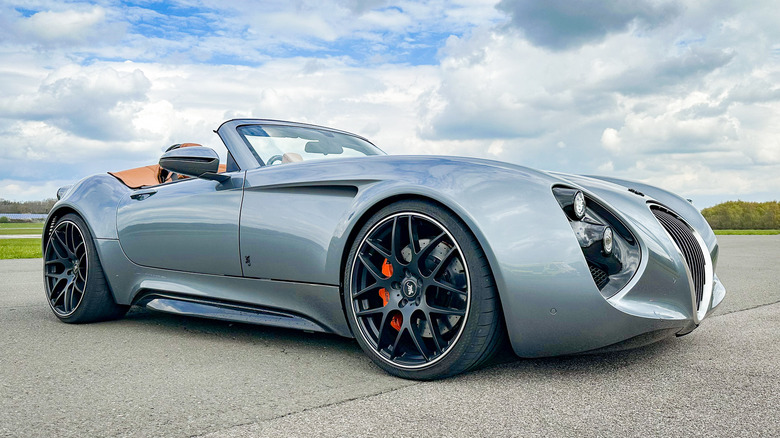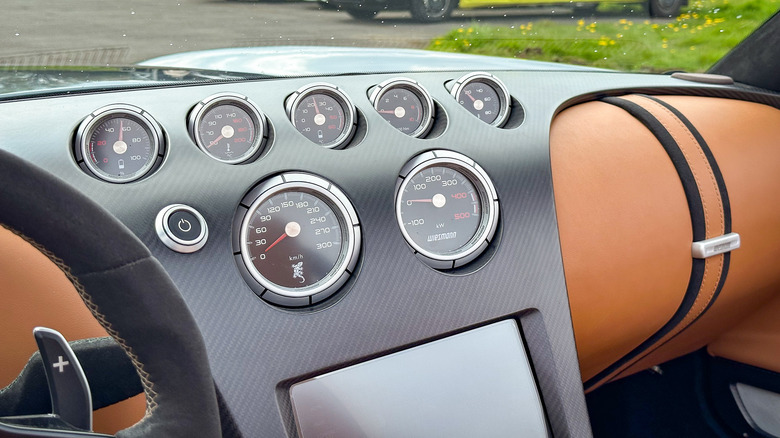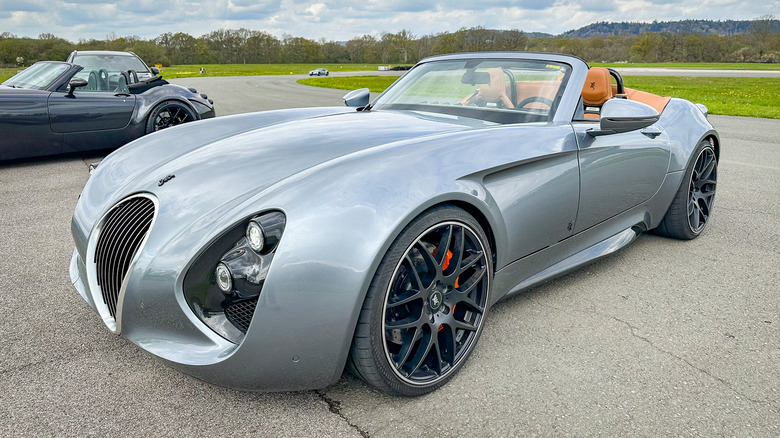Wiesmann Project Thunderball First Drive: A Sporty EV Roadster Aiming To Beat Tesla
Thought Tesla or Polestar would be first to deliver a convertible electric sports car? An obscure German automaker is back from the dead to say you're wrong. Founded in 1988 and reborn in 2016, Wiesmann is best known for producing two-seat roadsters with the looks of a classic British roadster and the power of a supercar, thanks to massive engines sourced from BMW's M division.
Wiesmann enjoyed some success during the 2000s, and is much better known in its native country than elsewhere. But that wasn't enough to keep it afloat, and in 2013 it filed for bankruptcy. Then along came Harvard-educated, British-Indian businessman Roheen Berry, who liked his V10-powered Wiesmann MF5 so much he bought the company.
Berry had planned to keep building sports cars powered by BMW engines, only for the first new Wiesmann in a decade to be stopped in its tracks by the pandemic. As Covid-19 brought the 2020 Geneva motor show to an end before the doors had even opened, Wiesmann pivoted from hydrocarbons to electrons in a bid to make the first production-ready electric roadster — a race that also includes open-top EVs from Porsche, Tesla and Polestar.
With Porsche's new, all-electric Boxster not due until 2025, the Polestar 6 intended to arrive a year later and the Tesla Roadster missing in action, Wiesmann could deliver the first electric convertible sports car, should what's currently known as Project Thunderball hit its 2024 deadline.
Enter, Project Thunderball
Berry's a big James Bond fan, but it's unlikely Wiesmann will be able to use the Thunderball badge when its electric car goes into production. It's a fantastic name, and will no doubt help everyone pay attention to what Wiesmann is doing, but the car will surely be called something else once it graduates from project to product.
Project Thunderball borrows heavily from Wiesmann design of old, albeit with sharper external detailing and an interior that mixes analog dials with digital displays, including a central touchscreen for controlling infotainment and climate. The two-seater manages to cram a large, 84 kWh battery pack under its retro body, arranged in a T-shape to fit in what used to be the engine bay and along the repurposed transmission tunnel.
That battery sends power to a pair of axial-flux motors on the rear axle. Instead of driving a wheel each and employing all sorts of clever torque vectoring, the motors share a common drive shaft which is then connected to a conventional limited-slip differential. Wiesmann says total power is a massive 680 horsepower, with an equally muscular 811 pounds-feet of torque. The car is said to weigh "a little more than" 3,747 lbs and has a targeted 0-62 mph time of 2.9 seconds. Range is a claimed 310 miles, and the car's 800 volt architecture means a DC charging rate of up to 300 kW, plus up to 22 kW charging when attached to a domestic AC outlet.
An analog EV
Much of Project Thunderball is unashamedly old-school. The sills are high and the seats are low because there's no battery in the floor. Combine this with a high windscreen scuttle and the driver feels like they are sitting deep inside the car, its long hood reaching out to the horizon.
Seven analog dials face the drive from the center of the dashboard, while a digital display behind the Morgan-esque steering wheel shows speed, system temperatures, driving mode, power output and regenerative braking level — the latter being adjustable with paddles at the driver's fingertips.
The cabin is very similar to that of older Wiesmanns, but with less footwell intrusion from where the engine used to be. The seats look and feel great, and there's a good sense of space, despite being sat so low. There's no traditional gear selector, with Wiesmann instead installing buttons for Park, Drive, Reverse and Neutral.
Much of the interior is either leather or exposed carbon fiber, which all looks pretty good to our eyes, although some leather components lack the quality you'd hope for from a circa-$320,000 sports car. Hopefully these areas, especially the creased and crinkled hood cover, can be improved before customer cars are produced.
Similarly, the highly-reflective touchscreen and driver display need improvement if they are to be of any use on a bright day. The infotainment screen is also positioned awkwardly low on the dashboard, taking the driver's eyes further from the road than we'd like.
Usable performance
We select Sport mode and head out onto the wide runway of Dunsfold Aerodrome in Surrey, England, but which is better known as the Top Gear Test Track. We're confined to the airfield today because this Project Thunderball is a pre-production prototype and not yet ready for the public road.
The car is significantly quieter than the eardrum-assaulting V8- and V10-engined cars we've just driven from Wiesmann's heritage collection, including Berry's personal MF5. There's a fair bit of mechanical whine from the electric drivetrain, which is no bad thing in a bruising sports car like this. But the limited histrionics and width of the track make it hard to judge speed and truly appreciate the car's performance.
It certainly doesn't feel like the full 680 hp just yet, but the lack of a nausea-inducing, all-wheel-drive launch off the line — a party trick tediously shared by so many of today's EVs — is actually rather welcome.
Instead the Wiesmann delivers its power in a more traditional way, the long-travel accelerator daring you to push further, while the electrically assisted steering is direct and calibrated to feel heavier than the flyweight steering found in many of today's sports and supercars. The car quickly feels very much like its internally-combusted relatives, with Wiesmann doing a good job of retaining the traditional sports car DNA.
A dynamically engaging EV
Our time with the Project Thunderball is limited, but we're given enough freedom to get a good feel for the car. There's plenty of mechanical grip on the dry test track, and although the relatively lofty placement of the battery leaves the car with a higher center of gravity than other EVs, the additional weight transfer and roll this creates gives the Wiesmann more character.
It also gives the driver more to think about and, while the car feels surefooted clipping the apex of the high-speed Followthrough corner, there's a sense that once its limits are breached the Project Thunderball will require skillful correction. We were very thankful to leave the circuit and head home just as a downpour arrived, but remain quite fond of the car's eccentricities.
The all-electric sports car is the great conundrum of the EV age. How do you make a smooth, silent car feel sporty and exciting with no soul-stirring engine, exhaust, and transmission? Wiesmann feels like it is getting close, and that's partly thanks to the battery not being in the floor. The extra hint of movement this creates gives the car more to offer than mere point-and-squirt performance, and a very low seating position too. It's engaging in a way many other EVs aren't, even very quick ones.
Also welcome is the lack of an augmented soundtrack. There are no sci-fi whooshes emitted from the sound system, and instead the driver is left to listen to the motor and transmission.
Upgradeability baked in
Something Wiesmann is keen to talk about is how the Project Thunderball has been designed to be upgraded later in life. Berry explained how components like the battery pack and touchscreen display can be swapped out when superior versions become available. "This gives you a car that never gets old," he said, adding: "This will be an electric car that grows with you and also grows with value for you. I don't think anyone has thought or even tried to do that."
A key driver here is how Wiesmann cars have held their money remarkably well. The MF3 entered the UK market in 2005 for around £60,000 ($75,000), but today an example from 2010 can cost more than £175,000 ($220,000). Berry hopes that future upgrades will help keep secondhand Project Thunderball prices equally buoyant.
It will be interesting to see if Wiesmann manages to pull this off, and how regularly upgrades to the battery and infotainment will arrive in the coming years. First though, the company will need to keep up the momentum that has, so far, seen its first year of production sell out.
Taking Wiesmann international
Although not yet finished, the Wiesmann is already an electric sports car with character: one that doesn't feel exactly like every other. It's a car you could spend time getting to know, learning exactly how it works and how to get the most of it dynamically, rather than being blown away by explosive straight-line performance that soon feels two-dimensional. There's lots of power if you need it, but we're sure the best days of Project Thunderball ownership will be carving along the French Riviera or across an Alpine pass, not racing silently between the stop lights.
Wiesmann also hopes to sell its cars further afield than before. "Making the brand truly international is now our task," Berry said, "really introducing the brand to the world and letting them know this is a very well-known German brand."
They're big ambitions, part of Wiesmann's owner seeing it not as the German answer to Britain's Morgan, but as a rival to heavyweight Aston Martin. "I think Morgans are great, but this thing will leave a Ferrari F12 standing," Berry promises. "This is a thoroughbred sports car."
